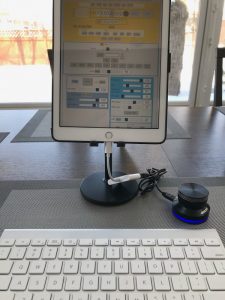My wife and I rented a condo in Florida for the month of January. We had been to this condo before, and I knew that there was no possibility of installing an antenna for the month, even temporarily. So I chose to investigate how to leave my rig at home in Hoffman Estates and operate it remotely through the internet.
My HF station consists of an ICOM IC-7300 connected to a long wire on the backyard fence. It uses the internal antenna tuner on the ICOM for operations on all bands 80 through 10 meters. All of my HF activity is on CW.
I discovered that there were several approaches to remote operating. Many required computers at each end. Several required a long list of tasks to follow to get the rig to talk to the nearby computer, and another list to get the two computers to talk to one another over the internet. This all sounded complicated. I didn’t have enough spare computers or laptops to use, and I was concerned that I would not be able to troubleshoot the system from Florida.
But I did find a solution that didn’t require computers or programming. It is a subscription service called RemoteTX. Here is how it works.
At my home QTH, I purchased a Raspberry Pi. RemoteTX sent me a program to load onto the Pi, and they gave me a unique access to their server. The program that I received works with the IC-7300 and communicates through my home router to their server. I loaded the program onto the Pi, and then connected a couple of cables. Since my station is not near my router, I set the Pi to connect to the home router through wi-fi.
At the remote location, all that I need is an iPad or iPhone. I chose to use the iPad at a desk in the condo in Florida. I purchased an optional tuning knob so that I didn’t have to use arrow buttons on the iPad screen to change frequencies. I also brought along a wireless keyboard for sending the CW instead of using the keyboard on the iPad. Because of the variable internet delay, the CW has to be sent by keyboard, which then works with the internal keyer on the ICOM, in order to keep the dot, dash, and letter spacing correct.
At the home station, I purchased an optional sound card so that the ICOM audio is transmitted back to me at the remote location. This is handy for listening to the CW that is being sent, but it is not absolutely necessary.
The picture included with this article shows the remote setup with iPad, tuning knob, and keyboard.
So the next time you hear me on the air, I might well be operating from remotely. By the way, a common exchange on CW is the weather. But it was difficult to say that the temperature was 20 degrees in Hoffman Estates where the transceiver was located, when I was actually in a location where the temperature was 60!
See you on the air!
73, Jack, W9YY
